Race for the Galaxy and San Juan
a comparative review
11 November 2017
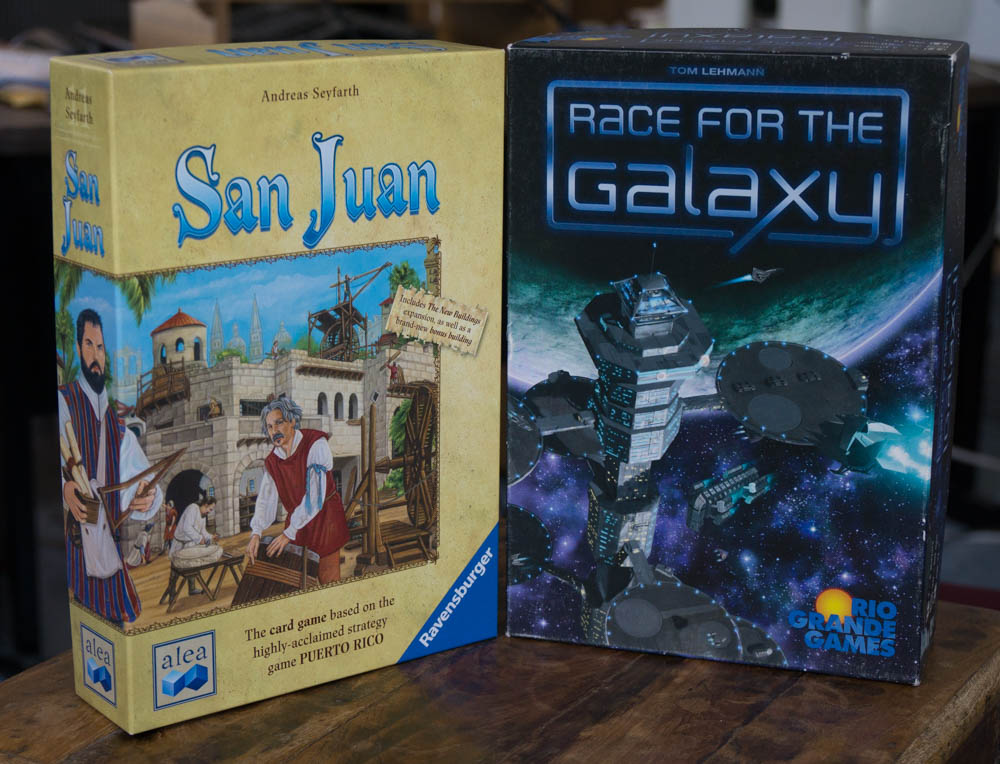
San Juan and Race for the Galaxy (henceforth “Race”) are two card games with a common origin and similar gameplay. I enjoy both games a lot, and they have enough differences in their appeal that I'm happy to own both. The essence of their differences is that Race is the deeper and more complex game, so appeals more to people who are comfortable with more complexity in rules and gameplay. Furthermore Race makes heavy use of icons to explain what its cards do - some find the icons work well once learned, others find them very off-putting.
The common origin is that they are both card games inspired by Puerto Rico, which was the most highly regarded game of its time (mid 2000s), holding a 6 year run at the #1 spot on the Board Game Geek's rankings. Tom Lehmann (the designer for Race) and Andreas Seyfarth (Puerto Rico's designer) worked independently on a Puerto Rico card game. In the end Seyfarth, taking some ideas from Lehmann's work, produced San Juan as a clear successor to Puerto Rico, while Lehmann developed his ideas into Race using a science fiction theme.
Both games share core mechanics of hand management and tableau building. During the game I draw cards into my hand. I can then choose to build some of them, placing them in my tableau. Building a card in the tableau gives me special powers for the remainder of the game and also victory points at the end. But in order to build a card, I need to pay for it by discarding other cards - hand management. Once the tableau reaches a certain size, it's the end of the game, and whoever has the cards that score the most victory points wins.
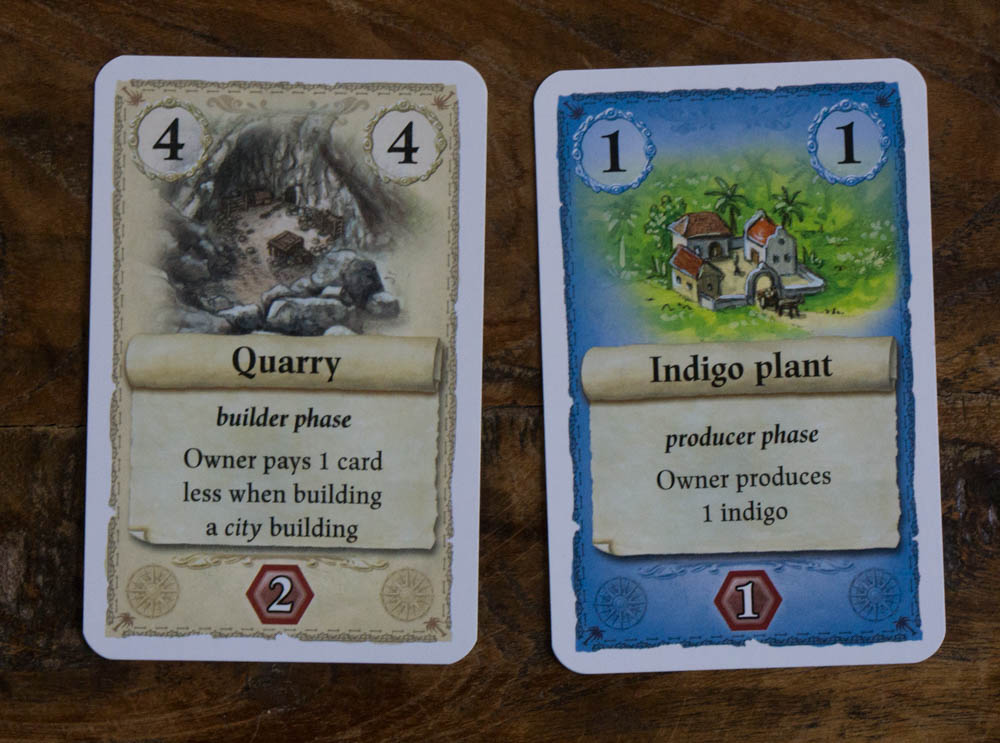
A couple of San Juan's cards
I first came across this combination of hand management and tableau building with Citadels, although it's not clear if either designer had come across that game. But there is a sense in which you can say that both Race and San Juan are some crazy experimental fusion of Citadels and Puerto Rico. 1
1: This inevitably brings to mind Shut up and Sit Down's Frankenstein experiment, where they strangely pictured San Juan as the lab-forged offspring of Citadels and Race for the Galaxy (?!!!). It always puzzled me as to why they picked this pairing, it later turned out that they'd never played Puerto Rico. Which strikes me as rather like a movie critic saying they'd never seen Casablanca.
The most notable influence of Puerto Rico is the action selection mechanism, which is called role selection. Each turn a player chooses a single role to play for that round. The key point is that the role is played by all players,but the player who's chosen that role (the selector) gets a little bonus. This introduces an important bit of player interaction. If I can predict what my opponents will pick for roles, I may be able to use their role choice, allowing me to pick another role that will help me. Similarly when picking a role for myself, I have to worry about whether that role will help an opponent more than it helps me. Role selection like this is a key element in Puerto Rico. (Citadels also had a similar thing, but with the crucial difference that the person who selects the role is the only one to play it.)
San Juan's role selection is the closest to Puerto Rico. Each player in a round selects from a set of role tiles, if an earlier player chooses the builder action, I can't take it again. The tiles all return to the center at the end of the round.
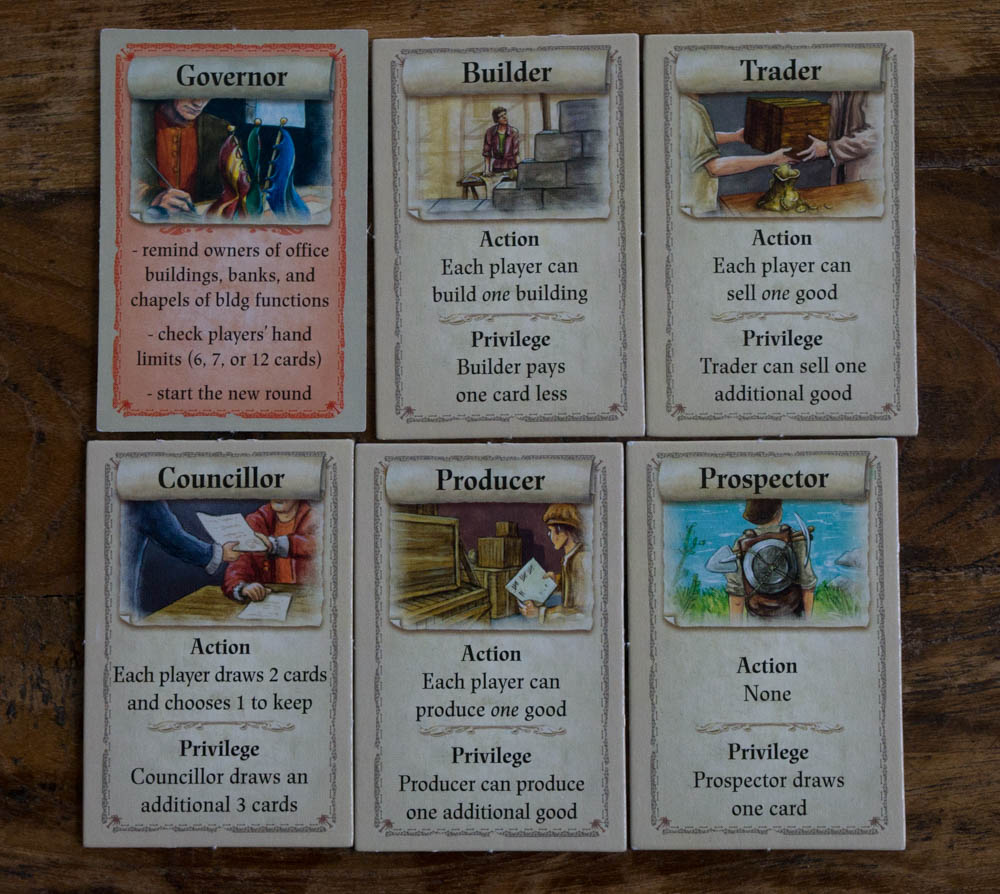
In San Juan the first player takes the governor tile, then chooses one of the other tiles as an action for everyone to perform. Each player takes one of the remaining tiles. At the end of the round everyone hands their role tiles back and governor is passed to the next player.
In Race everyone gets their own set of role selection cards. We all simultaneously pick which role we want, allowing more than one player to be the selector for a role in a round. Only the roles that are selected by someone will play in the round and there is a fixed sequence that the roles are played in during the round, as opposed to San Juan / Puerto Rico where the order of the roles in the round comes from the order in which players select. For me, both styles work equally well.
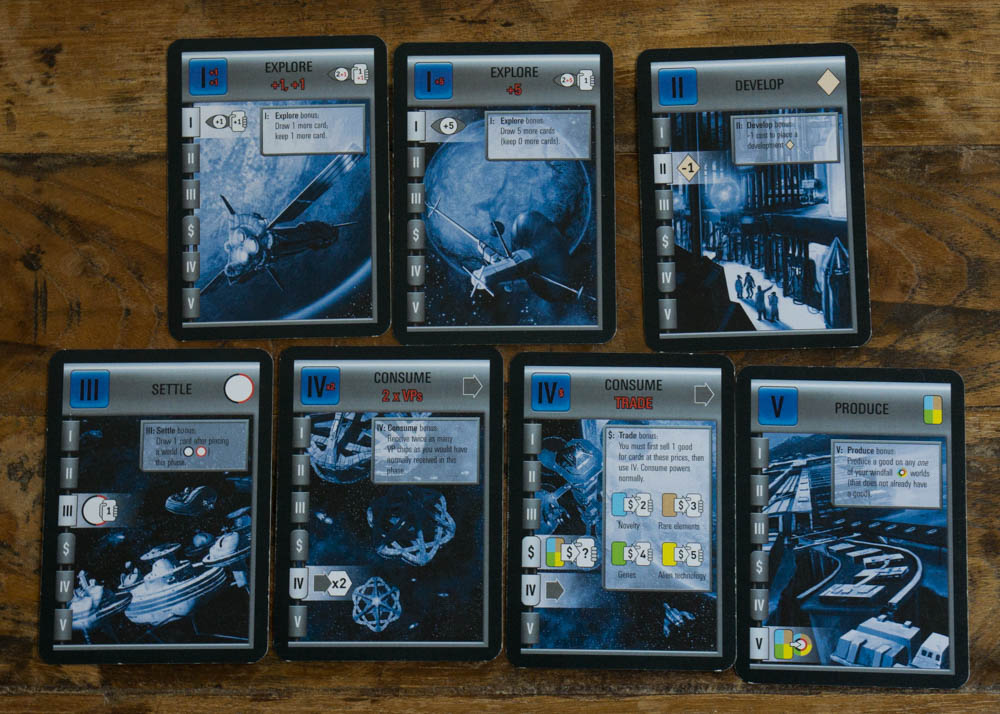
In race each player has a hand of role cards to choose from for each turn. The icons indicates what they do.
Both games share a fast playing time, Race's greater complexity doesn't turn into a longer game. Indeed Race makes good use of simultaneous play to help speed things up. Consequently both games are great fillers, games to play as a second game after the main game of the night, or when you only have an hour and want a quick game that can still send the little grey cells buzzing.
As I indicated earlier, when I build a card into my tableau, it gives me a special ability. How this special ability is expressed is an important difference between the two. In San Juan the ability is written out in text, but in Race it is usually indicated through a system of icons. Once I've learned the icons, I find I can easily scan across the cards in my tableau and see which ones have a power that I can use when playing a particular role. But this reliance on icons is a huge barrier to many people, who need to constantly refer to the player guide to figure out what the icons mean. It's hard to know if this will bother you unless you play a couple of games to try it out.
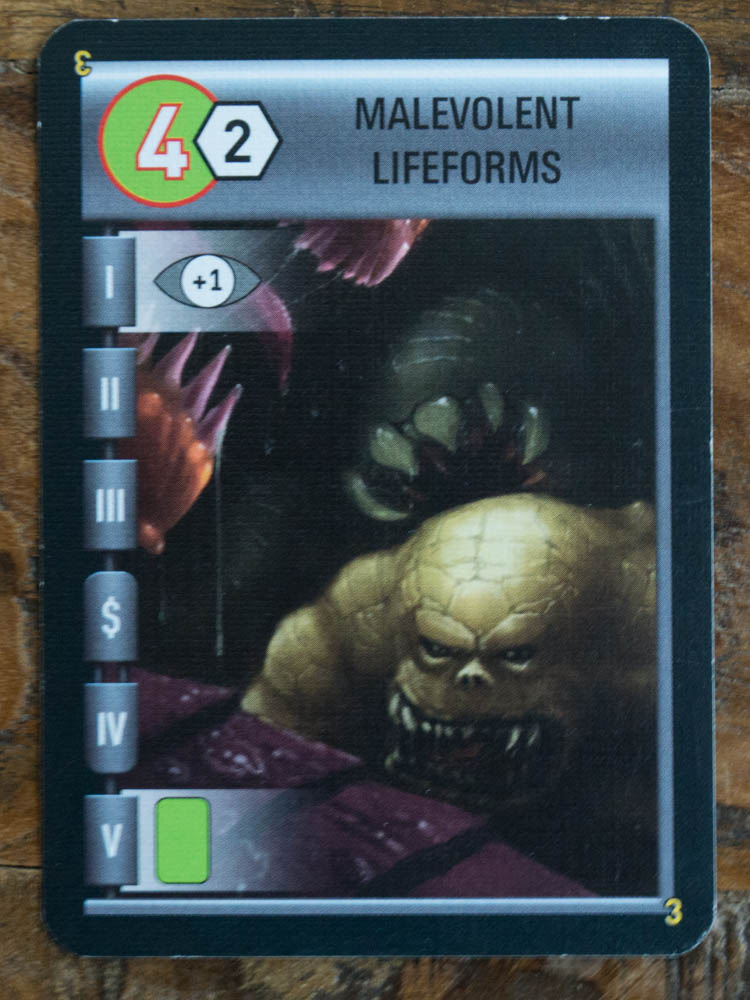
You need to learn Race's icons to understand what this card does, but once you do it's easy to see and scan. Down the left are the phases of each turn, so I can quickly see that this card has powers in phases I and V. In phase one I get to see one extra card, in phase five I produce one green good.
Both games have a production process, another notion from Puerto Rico. In San Juan some of the cards are production buildings. Once I have built them in my tableau, I can choose the producer role, allowing everyone to produce goods for one of their production buildings (as the person choosing the role, I produce in two buildings). Producing a good means taking a card from the deck, which I never look at, and putting it under the production building card. This goods card can then be sold with the separate trader action (again everyone sells one good on trading, with the selector of the action selling a bonus good). In return for selling the good, I can draw more cards into my hand.
Different production buildings lead to different amounts of cards I sell for: sugar will give 2 cards but coffee gives me 4. As you might expect it costs less to build a sugar mill than a coffee roaster, so I may have to decide between a cheap production building I can build now, or a more expensive one later. Or perhaps my choice is between losing all my cards for a better production building, or building something cheaper and still keep a valuable card in my hand for a later build. Timing between production and trading is important, as each production building can only hold one good. So if I have an empty production building, but my opponents' buildings are all full, then it's a good time to produce. Similarly its good to trade if I have goods but others don't.
Race's production process adds more depth. Production is pretty similar, but in Race (as in Puerto Rico) I can either trade goods for cards in my hand, or I can consume goods for victory points. Also, as in Puerto Rico, there is a good chance that if someone else selects the consume action I'll be forced to consume goods that I would have rather traded.
The production process is a key element of both games, allowing me to create an engine to bring cards into my hand. It's also a player interaction mechanism since I can get an edge by timing production and trade/consumption so that it benefits me more than others.
Both games have “big buildings” that, when built, score bonus points depending on other buildings in the tableau. (My name for these comes from the equivalent buildings in Pueto Rico, where they are twice the size of regular buildings.) Big buildings are expensive, and only score these bonus victory points, so I don't want to build them early. However they are also valuable in forming my strategy, so I may get one early and want to hang on to it till late in the game. The first edition of San Juan sufferred from an imbalance that one of these big buildings, the Guild Hall, was too easy to win the game with - this was fixed for the second edition. Race's big buildings come in the form of 6 point development cards. Finding a good combo between big buildings and the rest of the tableau builds can be a key element in winning the game.
Since both these games rely on card draws, there's obviously a lot of randomness present. But for me it's the good kind of randomness: good players will mostly beat poor play, but less skillful players still have a chance to steal the occasional win. The card art on San Juan is good, very much reflecting its close tie to the theme of Puerto Rico. Race carries good “realistic” sci-fi illustrations. Race comes as a base 4 player game, but expands to more players. Later expansions add more cards as well as achievement tiles (eg first player to have a good of each type) as another way to get victory points.
Since they are card games, they both act as good travel games. Both pack into a small bag, and can easily play on a small table. (I have particularly fond memories of playing San Juan with my wife in an al-fresco bar in Lucca.)
When I first got Race, I felt that it displaced San Juan (first edition) from my game roster. I preferred its greater depth, and more routes to victory. I've since come to value San Juan as a complement - it's easier to teach to new people and works for those who can't grasp the icons. They are both games I heartily recommend.
Footnotes
1: This inevitably brings to mind Shut up and Sit Down's Frankenstein experiment, where they strangely pictured San Juan as the lab-forged offspring of Citadels and Race for the Galaxy (?!!!). It always puzzled me as to why they picked this pairing, it later turned out that they'd never played Puerto Rico. Which strikes me as rather like a movie critic saying they'd never seen Casablanca.
Significant Revisions
11 November 2017: first published

